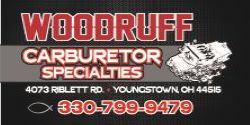I bought a set of old in the box Holley remanufactured outboard carbs for my A12. I went over the basics and refreshed a few seals and gaskets before the install.
There is a big difference in the way the outboard carbs come in compared to the re issue holleys that were on the car. Vacuum chambers were checked for holding vacuum and both have stock springs that are pretty light.
I think the re issued carbs had some modifications. I’m brainstorming about the function and application of the outboards. They get their signal from the center carb via the passage into the venturi. My question is about the same passages that are drilled in the outboards. Can they be modified ( ie made smaller ) to not act as a vacuum bleed ? I’m assuming that before those throttle blades actually open and start creating a vacuum also to the pods they are acting as a bleed to ease or delay the opening of the outboards.
Appreciate any input.
Dan
There is a big difference in the way the outboard carbs come in compared to the re issue holleys that were on the car. Vacuum chambers were checked for holding vacuum and both have stock springs that are pretty light.
I think the re issued carbs had some modifications. I’m brainstorming about the function and application of the outboards. They get their signal from the center carb via the passage into the venturi. My question is about the same passages that are drilled in the outboards. Can they be modified ( ie made smaller ) to not act as a vacuum bleed ? I’m assuming that before those throttle blades actually open and start creating a vacuum also to the pods they are acting as a bleed to ease or delay the opening of the outboards.
Appreciate any input.
Dan
















